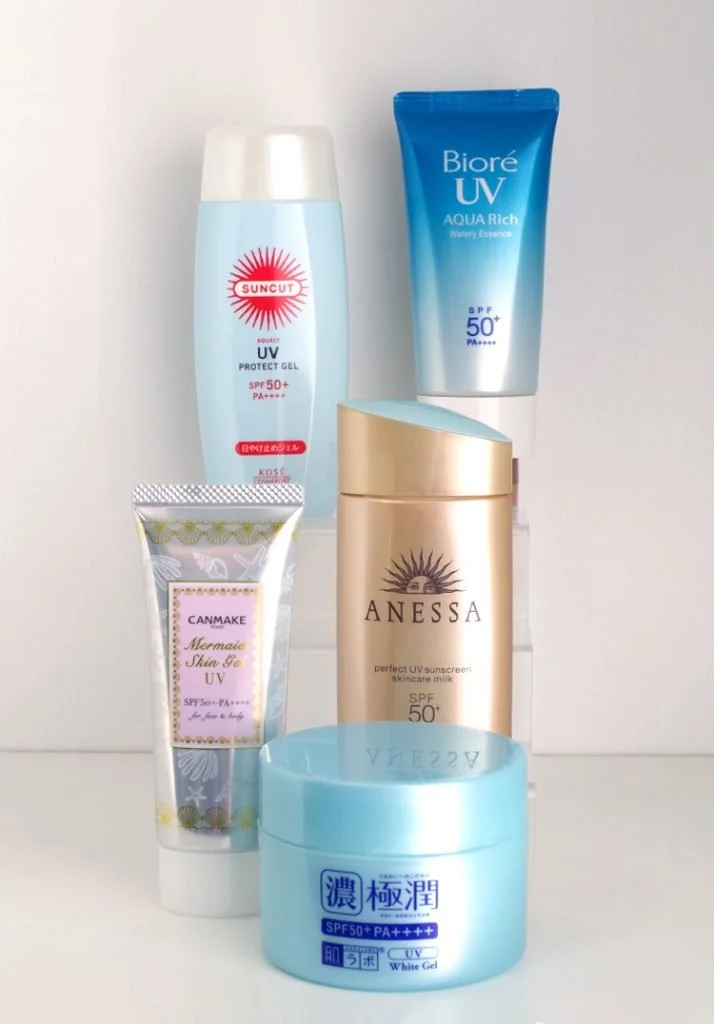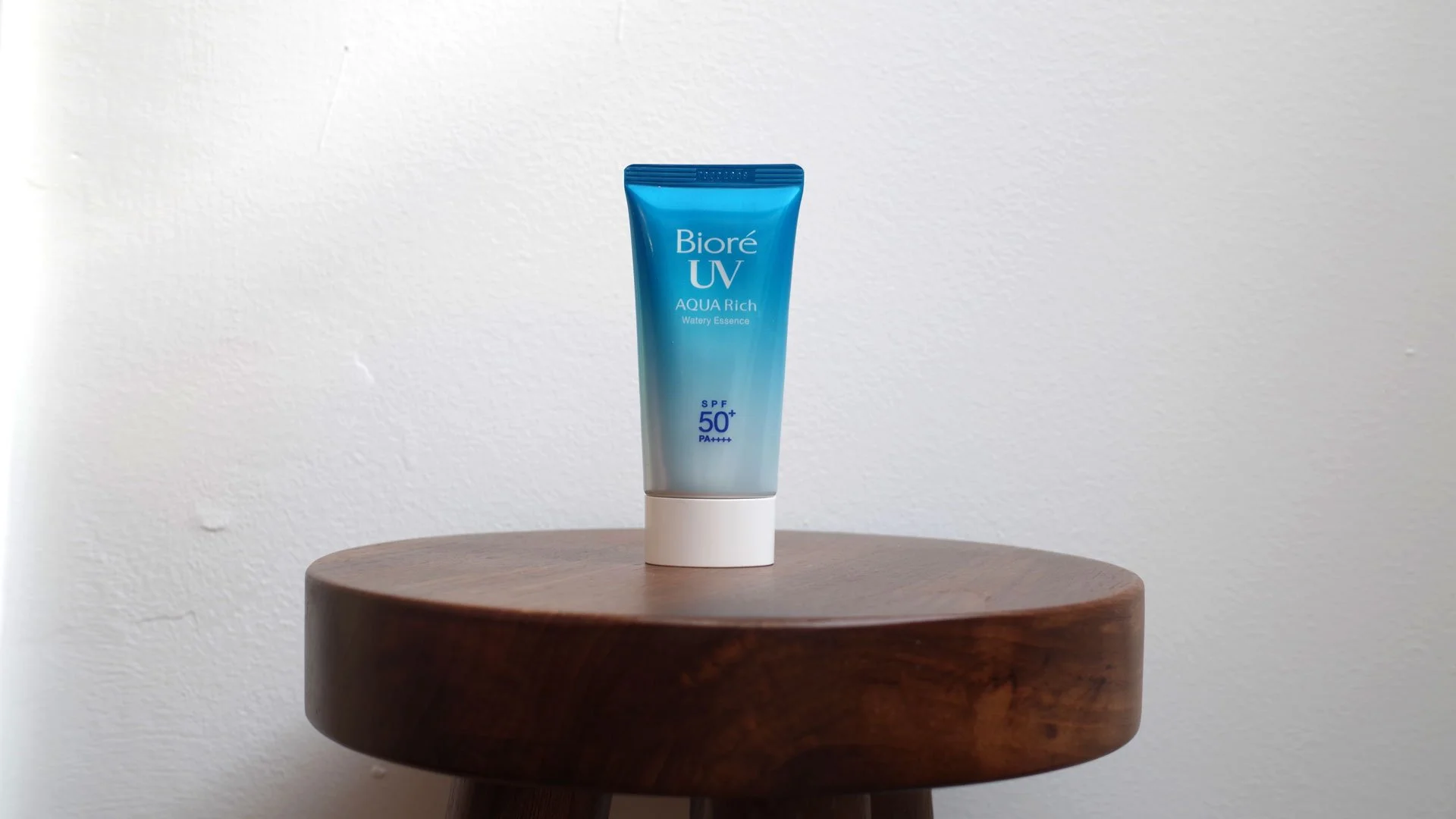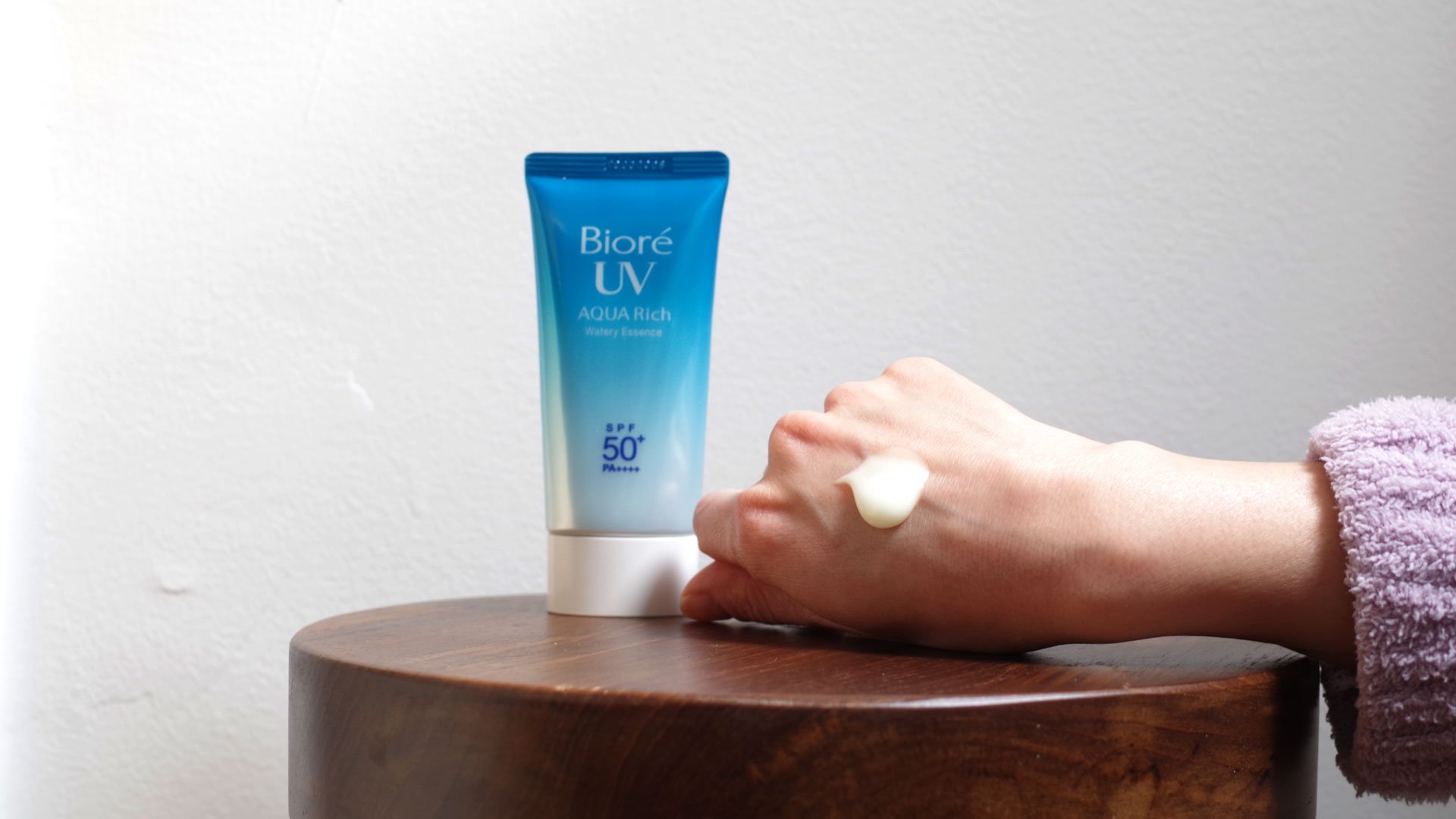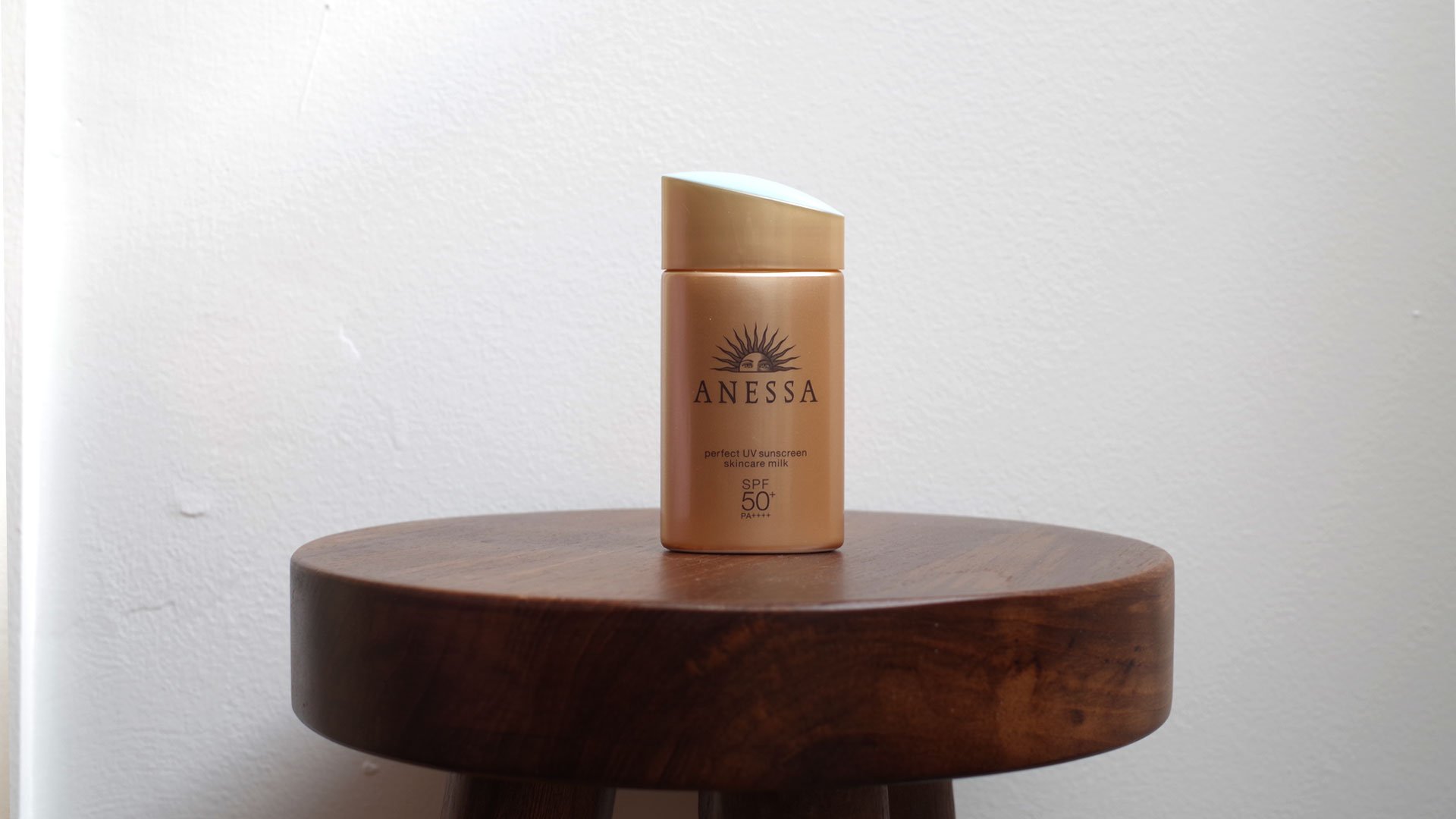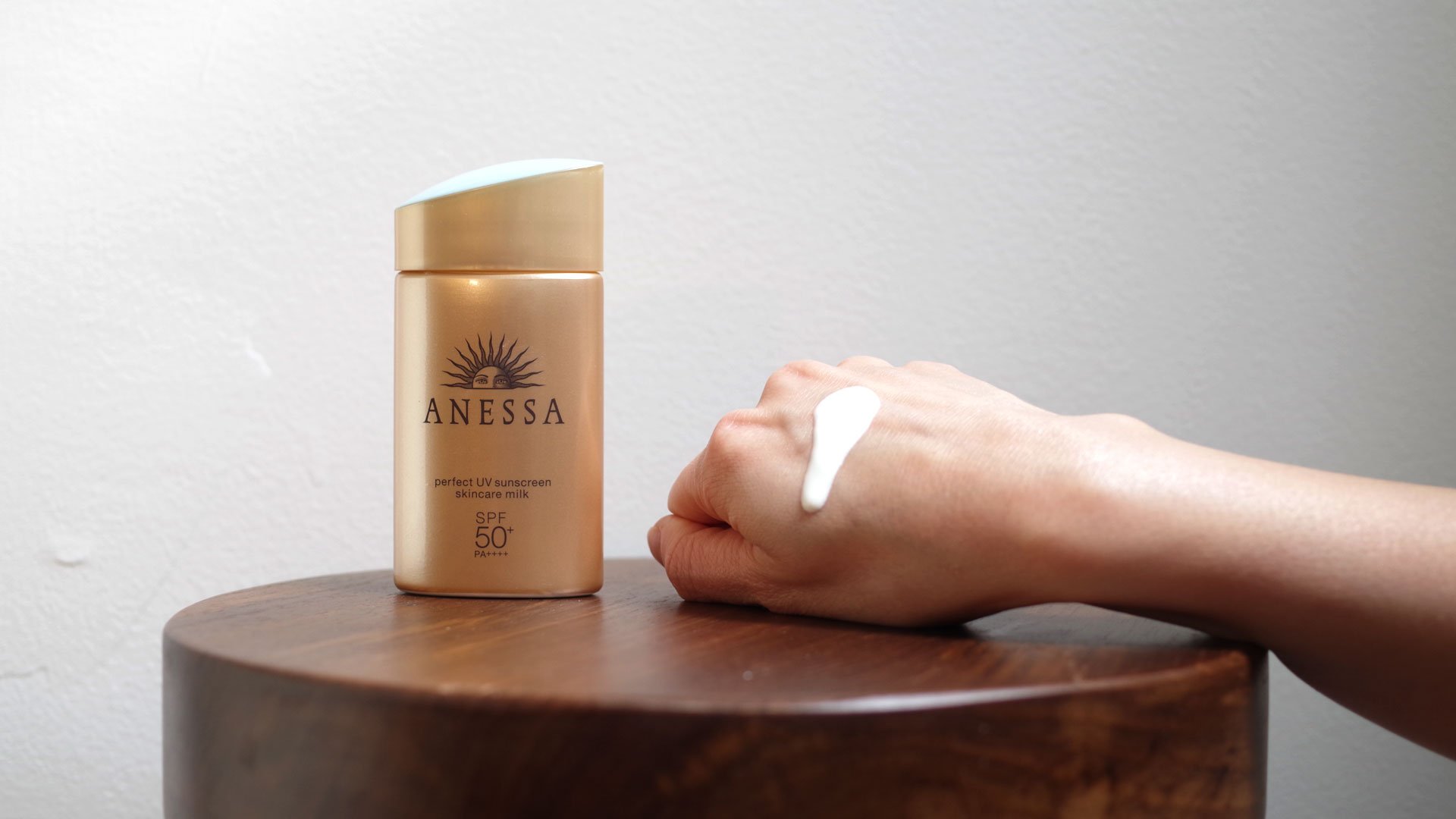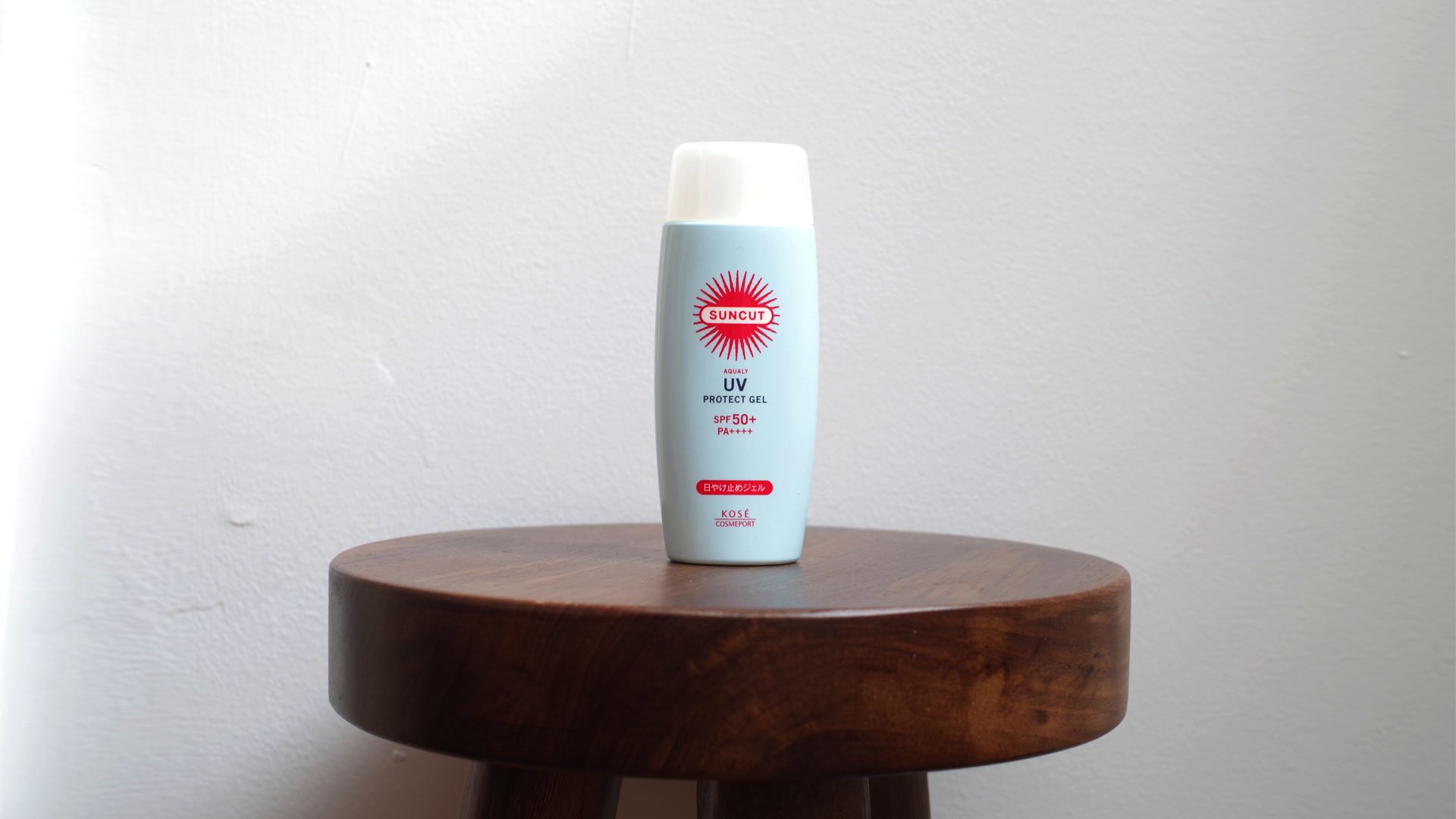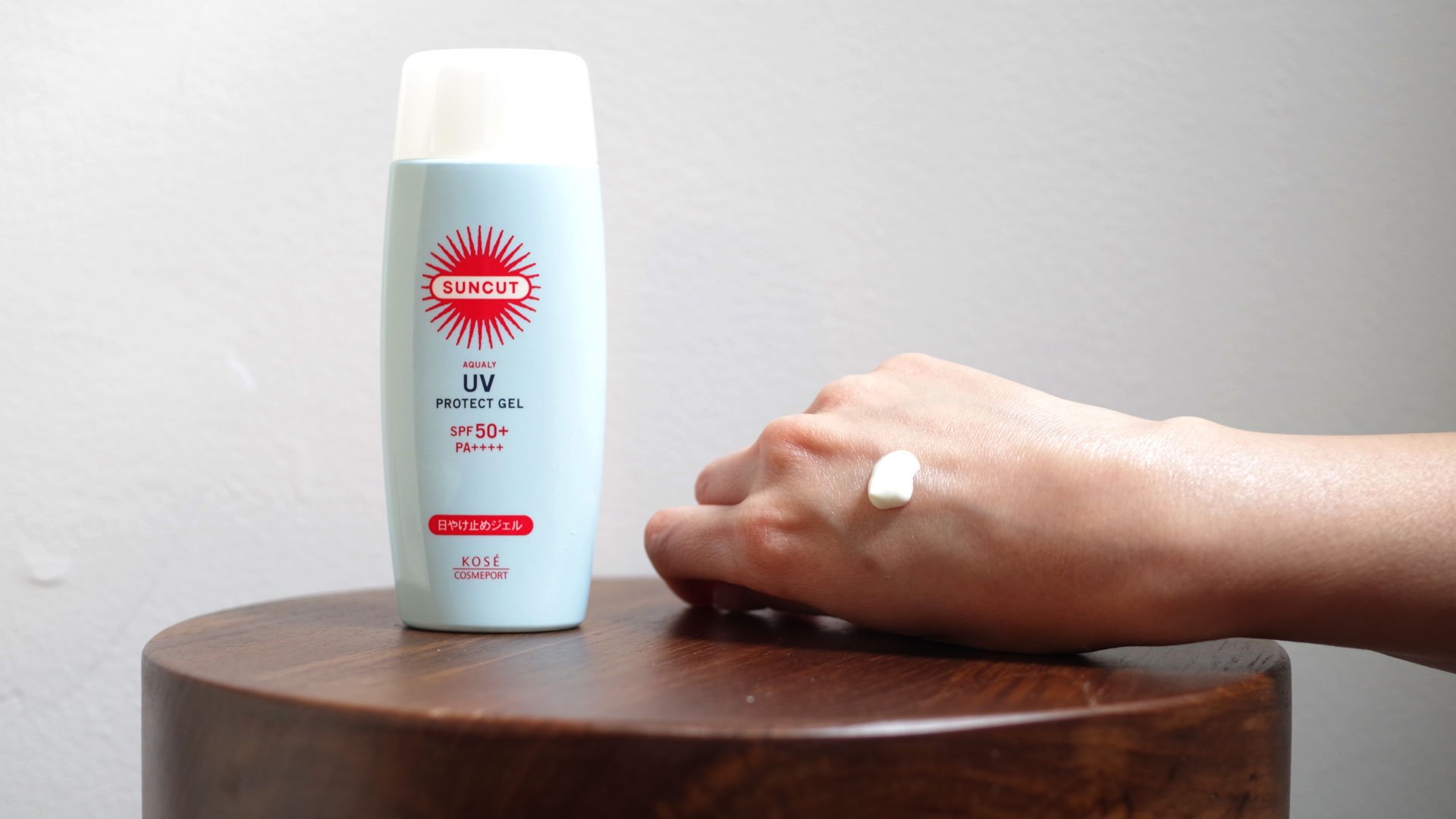5 Best Japanese Sunscreens
I wanted to update my list of the Best Japanese sunscreens as a few of the sunscreens I previously mentioned are now discontinued I’ve also been trying some new Japanese sunscreens lately that I love, so it’s the perfect time to update!
Sunscreen is something that was on my ‘must-buy’ list when I first went to Japan. I’ll never forget walking into a Don Quixote and being amazed at all the product merchandised all over the store. It was overwhelming at first, but I quickly felt like a kid in a candy store.
Japanese sunscreens are much beloved due to their amazingly light formulas that offer great protection against the sun. Almost every Japanese sunscreen I’ve encountered is a minimum of SPF 50+ with a PA++++ following right after. Asian countries take sunscreen seriously due a centuries-long obsession with light and fair complexions. And Japan is no exception.
Asian sunscreens typically have more superior formulas than American sunscreens due to different government regulations. Ingredients are quicker to be approved in Asian countries for use in cosmetics and the R&D is much further ahead than the US.
In the US, sunscreen is regulated as an over the counter drug, so the FDA has to approve new ingredients for use in sunscreen. In order to approve a new ingredient, the FDA has to extensively test new ingredients and surprise, surprise, like all other American public agencies, it can be pretty inefficient. The extensive testing and clinical trials done could take up to a decade.
I know there is massive debate within the community on chemical vs physical sunscreen in addition to the safety of new ingredients that aren’t approved in the US yet. This topic could actually be a separate blog post on its own (and may be!). With anything else in life, I caution you to please do your own research, make sure you are getting facts from scientists, and be cautious when any group or individual (not affiliated with a government or university) makes claims (ask yourself: can they benefit monetarily in some way from this?).
Anyways, honestly, all these sunscreens are great and offer superb protection (they are all SPF 50+ PA++++). The worst sunscreen on this list will still be a far better choice than Neutrogena. To narrow down to once choice for yourself, it will really just depend on your skin tone and product preferences.
Biore UV Aqua Rich Watery Essence SPF 50+ PA++++
This one is a classic and probably the one that put Japanese sunscreens on the map and earned the coveted “Holy Grail” status among many. It has a light, transparent gel texture that absorbs into the skin nicely with no stickiness AND a transparent finish – no white cast here!
This is a chemical sunscreen with the following filters used in this suncreen are: Octinoxate, Tinosorb S, Uvinul A Plus, and Uvinul T 150.
For the Biore UV Aqua Rich, I find myself liking this better as a body sunscreen, rather than a face sunscreen, due to the alcohols in the formula. For me, alcohols generally dry out my skin so I avoid skincare and makeup products with too much alcohol. There is also a faint scent of citrus and alcohol but quickly goes away post application. Personally, I notice that when I wear foundation or a color product over this sunscreen, my dry patches are significantly more noticeable.
However, if your skin isn’t sensitive to alcohol or anything else on the ingredients list, I think it’s worth checking out this sunscreen as it’s worked terrifically for so many.
Note that this product does have fragrance, BHT, and alcohols.
Available at Amazon.com.
INGREDIENTS: Water, ethanol, ethylhexyl methoxycinnamate, ethylhexyl triazone, isopropyl palmitate, (lauryl methacrylate / Na methacrylate) crosspolymer, diethylaminohydroxybenzoylhexylbenzoate, hydrogenated polyisobutene, bisethylhexyl oxyphenol methoxyphenyl triazine, palmitic acid Dextrin, BG, xylitol, (acrylate / alkyl acrylate (C10-30)) crosspolymer, dimethicone, alkyl benzoate (C12-15), glycerin, glyceryl stearate, propanediol, glyceryl behenate, (vinyl dimethicone / methicone Silsesquioxane) crosspolymer, cetanol, agar, sorbitan distearate, isoceteth-20, polyvinyl alcohol, (dimethicone / Vinyl dimethicone) crosspolymer, stearoyl glutamate, arginine, hydroxylated K, sodium hydroxide, royal jelly extract, sodium hyaluronate, phenoxyethanol, EDTA-2Na, BHT, perfume.
Shiseido Anessa Perfect UV Sunscreen Milk SPF 50+ PA++++
Shiseido’s Anessa sunscreen has been a top rated sun protection product in Japan for decades. This sunscreen has both physical (Zinc Oxide and Titanium Dioxide) and chemical (Octocrylene) UV protection. What’s unique about this sunscreen is that 50% of the formula is dedicated to ingredients that are actually supposed to help hydrate your skin, like hyaluronic acid.
I don’t necessarily need the traditional “skincare ingredients” in my sunscreen, but I don’t mind them as I find they enhance the overall formula.
The texture is very runny, almost sort of like a milk. It’s resistant to water, sweat, and sebum for up to 80 minutes. I like the hydrated but not too dewy finish it gives and I find it sits well underneath my makeup.
This one is probably my favorite sunscreen out of the group due to its hydrating benefits and strong UV protection.
Available at Amazon.com or GlowieCo.com.
INGREDIENTS: Dimethicone, water, zinc oxide, ethanol, ethylhexyl methoxycinnamate, talc, isopropyl myristate, methyl methacrylate crosspolymer, cyclopentasiloxane, isododecane, octocrylene, titanium oxide, PEG-9 polydimethylsiloxyethyl dimethicone, diethylaminohydroxybenzoyl benzoate Hexyl acid, glycerin, diisopropyl sebacate, (vinyl dimethicone / methicone silsesquioxane) crosspolymer, silica, dextrin palmitate, xylitol, trimethylsiloxysilicic acid, bisethylhexyl oxyphenol methoxyphenyl triazine, PEG / PPG-14 / 7 Dimethyl ether, Na chloride, tea extract, cherry leaf extract, caninabara fruit extract, acetyl hyaluronic acid N , Torumenthera root extract, Aloe vera leaf extract, water soluble collagen, PPG-17, triethoxycaprylylsilane, isostearic acid, distearyldimonium chloride, disteardimonium hectorite, aluminum hydroxide, aluminum, stearic acid, EDTA-3Na, BHT, tocopherol, isopropanol, BG, sodium pyrosulfite, phenoxyethanol, perfume.
Suncut UV Protect Gel SPF 50+ PA++++
Suncut’s UV Protect Gel SPF 50+ PA++++ is very similar to the Allie in texture, but it’s a tad runnier than Allie. Suncut’s sunscreen is another sunscreen with both physical and chemical properties. Filters used are: Octinoxate, Parsol SLX, Uvinul A Plus, and Tinosorb S.
What’s unique about the Suncut is that it claims to be fragrance free, a rarity in Asian sunscreen and generally, skincare, but we are seeing a lot more fragrance free options now. There is a light sunscreen-alcohol-ish scent, but it fades away after rubbing it in. Typically, I don’t mind scents, but I find that fragrance can irritate and break out my skin, so if there’s a fragrance free option, I’m always going to try that first.
The finish is also much less dewy than the previous mentioned sunscreens, so I’d recommend it for oilier and combination skin types.
After the Anessa, the Suncut is probably my second favorite out of this list. It’s light, non-greasy, and no strong smell!
Available at Amazon.com.
INGREDIENTS: Water(Aqua), Ethylhexyl Methoxycinnamate (7.48%), Alcohol, Isododecane, Polysilicone-15 (3%), Diethylamino Hydroxybenzoyl Hexyl Benzoate (2.31%), Bis-Ethylhexyloxyphenol Methoxyphenyl Triazine (1.5%), Silica, Dipropylene Glycol, Glycerin, Propylene Glycol Dicaprate, Silica Dimethyl Silicate, Anthemis Nobilis Flower Extract, Calendula Officinalis Flower Extract, Centaurea Cyanus Flower Extract, Chamomilla Recutita (Matricaria) Flower Extract, Clematis Vitalba Leaf Extract, Equisetum Arvense Extract, Fucus Vesiculosus Extract, Hedera Helix (Ivy) Extract, Hypericum Perforatum Flower/Leaf/Stem Extract, Sodium Hyaluronate, Spiraea Ulmaria Extract, Tilia Cordata Flower Extract, Acrylates/C10-30 Alkyl Acrylate Crosspolymer, Behenyl Alcohol, BHT, Butylene Glycol, PEG-10 Hydrogenated Castor Oil, PEG-40 Hydrogenated Castor Oil, Polyethylene, Polyhydroxystearic Acid, Potassium Hydroxide, Xanthan Gum, Methylparaben, Phenoxyethanol.
Canmake Mermaid Skin Gel UV SPF 50+ PA++++
Next up we have the Canmake Skin Gel UV and this one also says you can use it on your face and body, but I probably wouldn’t use it on my body since it’s such a tiny tube. I got this sunscreen recently and I’ve been loving it!
This is another Asian Sunscreen with both physical and chemical filters. Filters used are: Octinoxate, Zinc Oxide, and Titanium Dioxide.
Another thing that makes this sunscreen different is 85% of the formula is dedicated to skin benefitting ingredients, like how we saw with the Anessa one, but this one has a higher percentage. Again, I’m not really someone who looks for skin benefitting ingredients from my sunscreen other than SPF protection so it’s not a must-have but if a sunscreen has ingredients that will benefit my skin, I will totally try it. This one is super light, rubs in really well, and comes out of the tube white, but once you rub into the skin, it goes away.
The Canmake sunscreen is also alcohol free which is a rarity as well in Asian sunscreens, so if your skin is sensitive to alcohol, definitely check this out. This sunscreen also isn’t waterproof, so it would work better as a daily, normal sunscreen. If I were to go out exploring or hiking, I would choose Anessa. Some of the skin benefitting ingredients the Canmake has are Job’s tears and hyaluronic acid.
Available at Amazon.com.
INGREDIENTS: Water, BG, titanium oxide, hexyl diethylaminohydroxybenzoyl benzoate, zinc oxide, methyl heptyl laurate, dimethicone, cyclopentasiloxane, diisostearyl malate, octyldodecanol, Al hydroxide, PEG-60 hydrogenated castor oil, polyglyceryl-3 polydimethylsiloxyethyl dimethicone, stearic acid, phenoxyethanol, polyhydroxystearic acid, jojoba ester, xanthan gum, Trihydroxystearin, alumina, silica, arginine, α-glucan, phytic acid, silver oxide, arch chalk leaf extract, magwa root bark extract, hyaluronic acid Na, (hydroxyethyl acrylate / acryloyl dimethyl taurine sodium) copolymer, bisethylhexyloxy Phenolmethoxyphenyltriazine, Japanese primrose seed extract, Bilberry leaf extract, glucosylceramide, Magou root peel extract, glucosyl ceramide, evening primrose seed extract, sodium hyaluronate, cottonseed seed extract, ethylhexyl methoxycinnamate, (hydroxyethyl acrylate / acryloyl dimethyl taurine Na) copolymer, ethyl hexyl methoxycinnamate, blackberry blossom extract, bilberry leaf extract, adlay seed extract, sodium Mayo yoshino leaf extract, oilseed flower extract, bisethylhexyloxy Phenol methoxyphenyl triazine, saxifrage extract, yukinoshita extract, Meiyoshi Shino leaf extract.
Hada Labo UV Perfect Gel SPF 50+ PA++++
Last up we have this sunscreen from Hada Labo and this one’s very interesting because it comes in a tub. I haven’t seen any Hada Labo products in a tub. I think sunscreens should be inside tubes or something you can squeeze out of. From all the previous sunscreens reviewed, the packaging is really similar.
The formula is really nice and this one also rubs into the skin so well. It has a gel like, light consistency. The Hada Labo sunscreen has both chemical and physical filters: Octonixate, Uvinal A Plus, Parsal SLX, and Tinosorb SB. It’s fragrance free, mineral oil free, and just like with their normal products, I do like it – it’s just a shame about the packaging.
Available at YesStyle.com.
INGREDIENTS: Water, ethylhexyl methoxycinnamate, isononyl isononanoate, dimethicone, alcohol,butylene glycol, PEG-12 dimethicone, pentylene glycol, polysilicone-15, glycol dimethacrylate crosspolymer, diethylamino hydroxybenzoyl hexyl benzoate, polysilicone-13, bis-ethylhexyloxyphenol methoxyphenyl triazine, phenoxyethanol, carbomer, triethanolamine, polystyrene, methylparaben, polyvinyl alcohol, hydroxyethylcellulose, disodium EDTA, iodopropynyl butylcarbamate, magnesium ascorbyl phosphate, acrylates / C10-30 alkyl acrylate crosspolymer, hydrolyzed hyaluronic acid, sodium hyaluronate, titanium dioxide, ammonium acrylates copolymer, hydrated silica, aluminium hydroxide, hydrogen dimethicone.
What sunscreen should I try?
Regardless of what sunscreen you pick, make sure that it is at least SPF 50+ with PA++++ and ideally has both physical and chemical protection if you want to be covered on all bases in terms of UV protection.
You can’t go wrong with any of the previously listed sunscreens or even any sunscreen that’s made in Japan. Have you tried any Japanese sunscreens?
